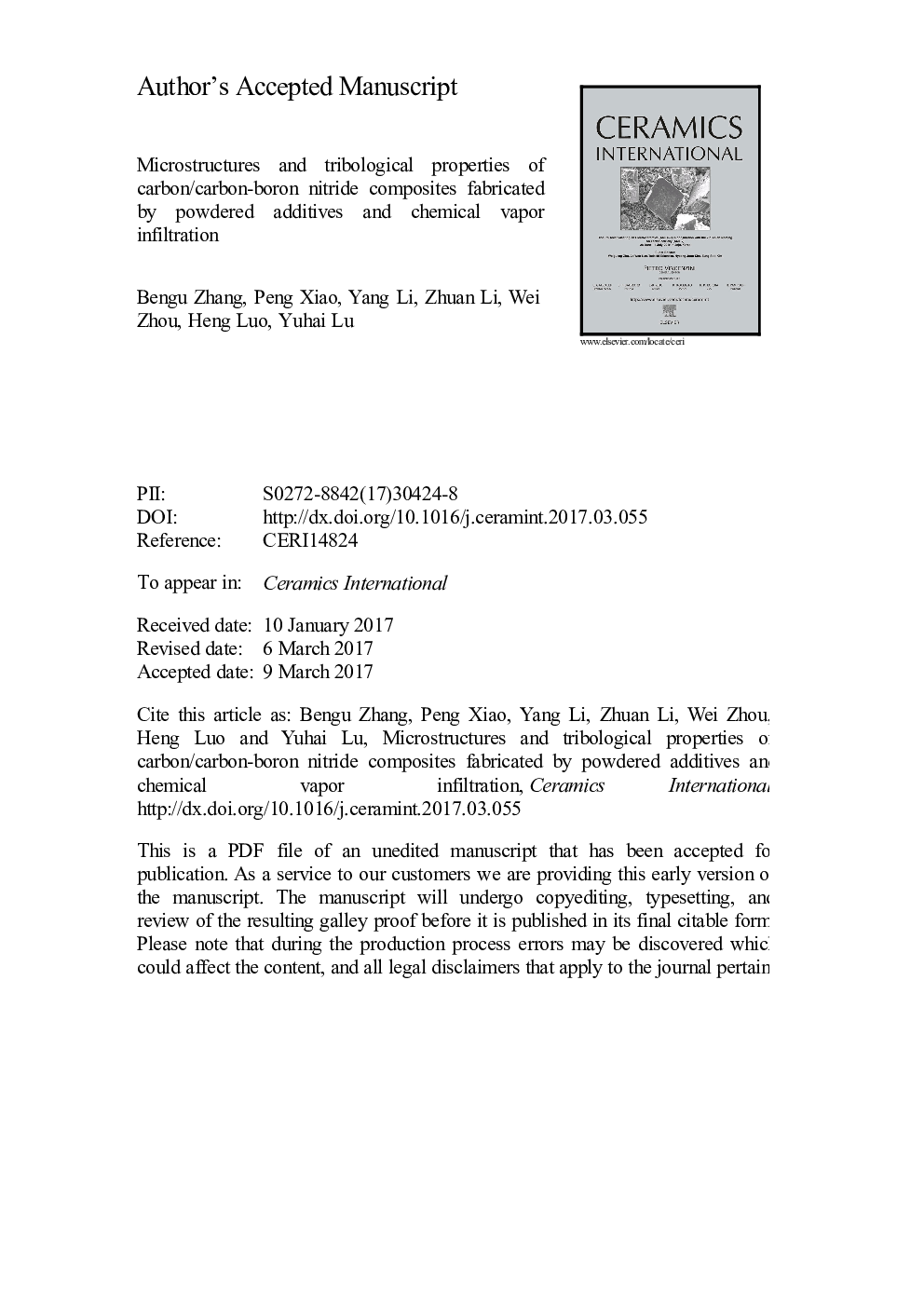| Article ID | Journal | Published Year | Pages | File Type |
|---|---|---|---|---|
| 5438542 | Ceramics International | 2017 | 36 Pages |
Abstract
The carbon fiber reinforced/carbon-boron nitride (C/C-BN) dual matrix composites were fabricated via adding hexagonal boron nitride (h-BN) powders into the needled carbon felt and subsequent chemical vapor infiltration (CVI) process. An experimental investigation was performed to study the influences of BN volume content on the microstructures and tribological properties of C/C-BN composites. The results indicate that the pyrolytic carbon (PyC) in the C/C-BN composites is regenerative laminar (ReL) due to the inducement of BN powders during CVI process, whereas the PyC in the C/C composite is classic smooth laminar. Additionally, the friction coefficients of C/C-BN composites with three different BN contents in volume fractions (4.5, 9 and 13.5Â vol%) are all higher compared to the reference C/C composite (0.22). Note that the highest coefficient of friction (0.29) is obtained when the BN volume content in the C/C-BN composite is 9Â vol%. Moreover, the linear and mass wear rates of C/C-BN composites as well as the 30CrSiMoVA counterparts are significantly decreased with the increase of BN volume content. The favorable friction and wear properties of C/C-BN composites are attributed to the synergistic effect induced by the ReL PyC and BN. The microstructural variation of C/C composites modified by h-BN could improve the compatibility between the C/C-BN composites and 30CrSiMoVA counterpart, resulting in an enhanced adhesive attraction between the wear debris and the surface of 30CrSiMoVA counterpart. Furthermore, the investigations concerning the friction surfaces indicate that the formation of sheet-like friction films with large areas are more easily to occur on the surfaces of 30CrSiMoVA counterparts mating with the C/C-BN composites rather than mating with the C/C composite.
Keywords
Related Topics
Physical Sciences and Engineering
Materials Science
Ceramics and Composites
Authors
Bengu Zhang, Peng Xiao, Yang Li, Zhuan Li, Wei Zhou, Heng Luo, Yuhai Lu,
